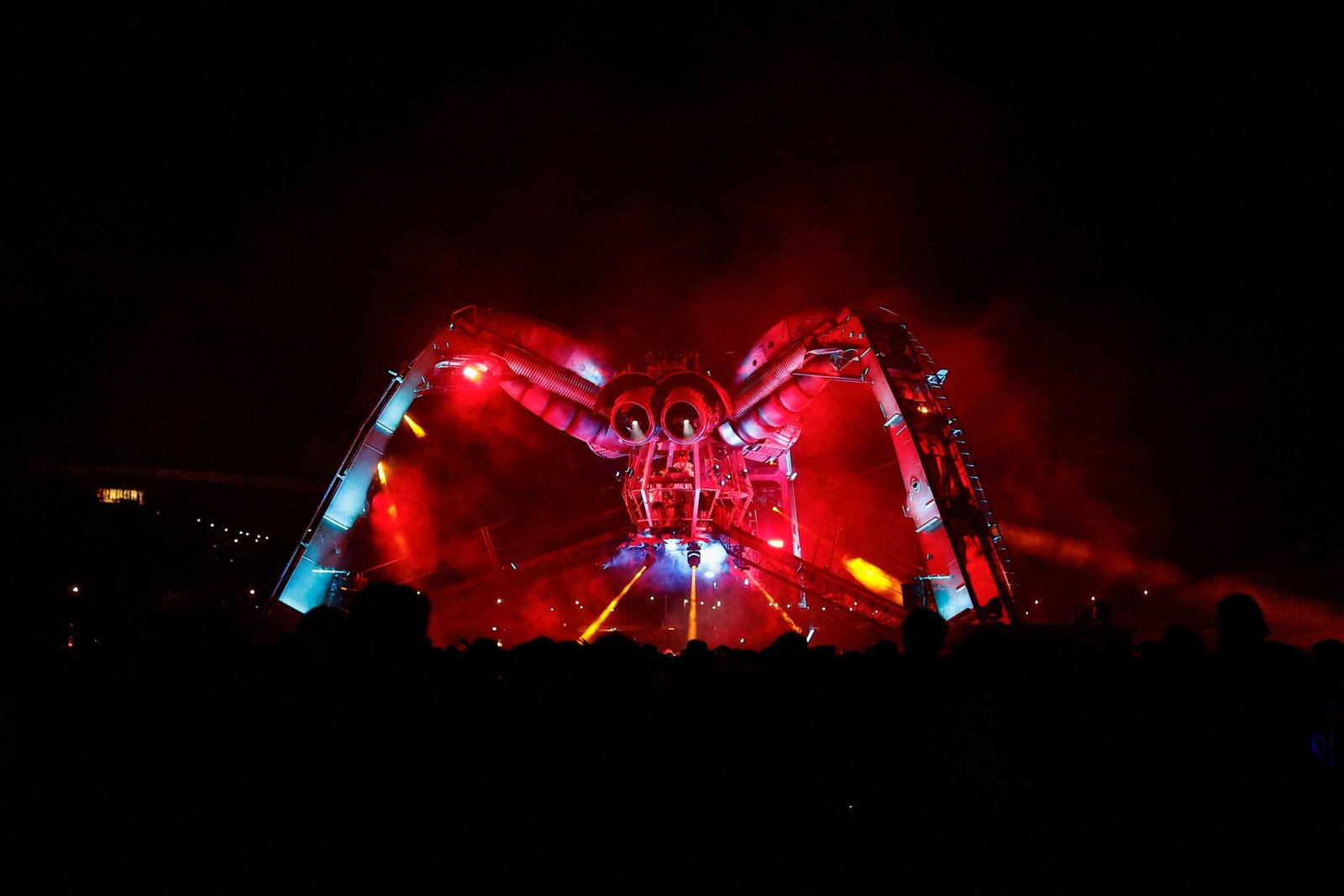Glastonbury, the renowned British music festival, has long been a sight to behold with its flamboyant artwork and eclectic lineup of musicians. This year, the festival becomes even more mesmerising as the gigantic Arcadia spider stage, built from recycled military hardware, breathes fire into the night, creating a striking tableau against the cloudy skies. The pulsating beats of electronic music duo, the Chemical Brothers, reverberate through the air, invigorating hundreds of festival-goers. What makes this spectacle all the more remarkable is the new energy source powering the festivities – renewable energy.
For years, the imposing metal arachnid has been a symbol of Glastonbury’s commitment to sustainability and creativity. This time, however, it represents a noteworthy milestone. The entirety of the festival, from the iconic Arcadia to the prominent Pyramid stage, is being fuelled by renewable energy sources, a notable shift that reflects the festival’s dedication to environmental consciousness.
In a move that the festival organisers call a “step towards a greener future”, Glastonbury is now relying on hydrotreated vegetable oil (HVO) for power. Made from waste cooking oil, this renewable alternative to diesel fuels the generators that run the stages and lighting equipment. This innovation marks the culmination of ongoing efforts to create a more sustainable event.
Bertie Cole, the co-founder of the Arcadia stage, spoke to DJ Mag about this development. “Given the existing infrastructure that music festivals operate on, we identified a sustainable, waste-derived fuel as one of the most efficient ways to power the machinery,” he said. He admitted that finding the optimal solution had been a long-term experiment, but affirmed, “this year, we feel like we’ve finally arrived.”
Despite priding itself on social consciousness, Glastonbury has not been immune to environmental criticisms. The mounds of rubbish left behind by its 200,000 attendees, despite pleas to “leave no trace”, and the contamination of local freshwater ecosystems due to public urination have tarnished the festival’s reputation. Moreover, the substantial carbon footprint due to travel, especially by overseas visitors, has been another area of concern.
In response, Glastonbury’s organisers are taking comprehensive measures to mitigate these environmental impacts. In addition to the shift to HVO power, a temporary 20-metre wind turbine has been installed this year on Worthy Farm. It looms majestically over the festival grounds, providing sufficient energy to power food stalls and the equivalent of 300 refrigerators a day. This is yet another testament to the festival’s ongoing efforts to reduce its carbon footprint and foster a more sustainable future. As the fiery breath of the Arcadia spider lights up the Glastonbury skies, it symbolises not just a spectacle for the senses, but also a beacon of environmental stewardship.
READ MORE:
